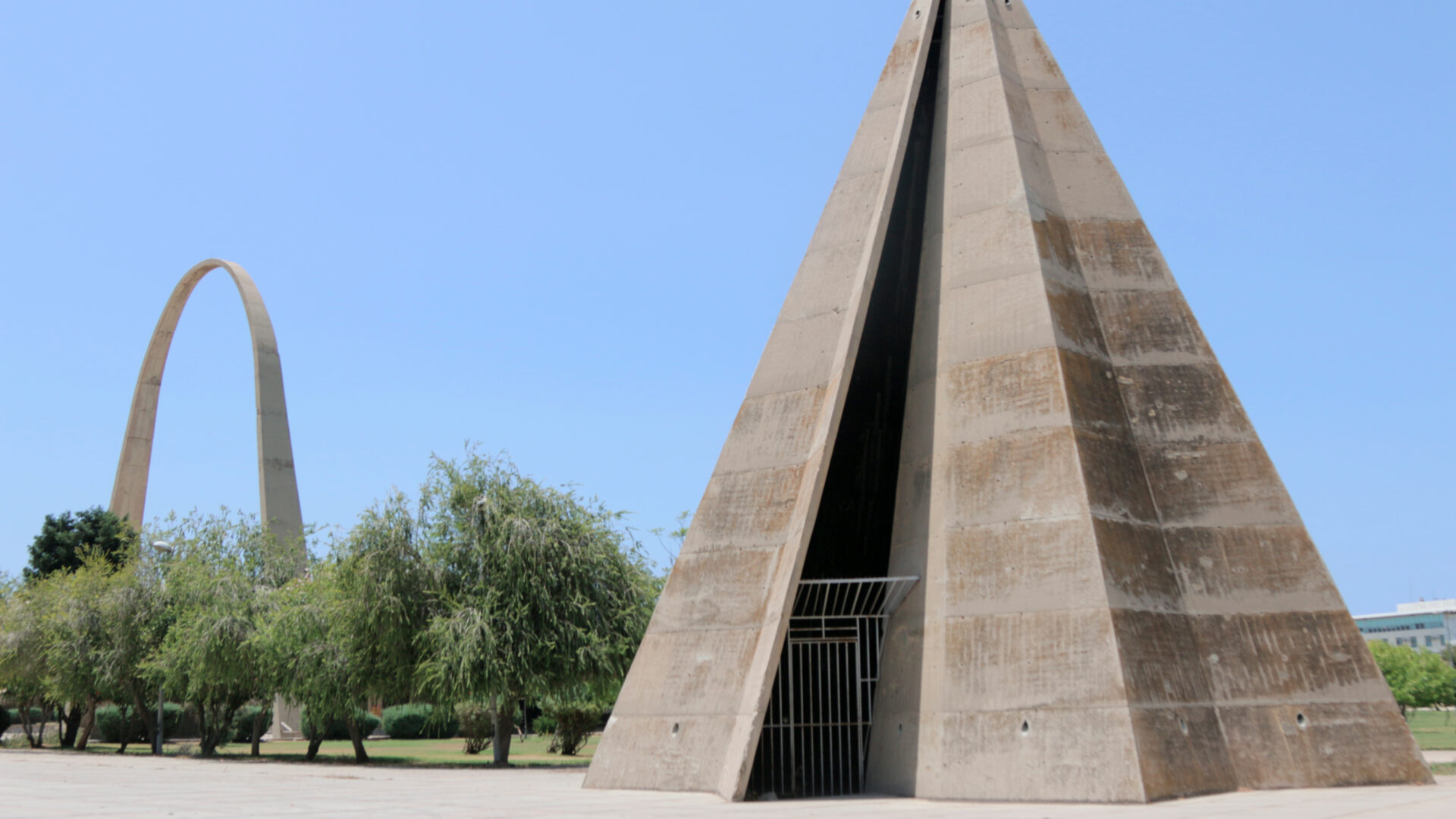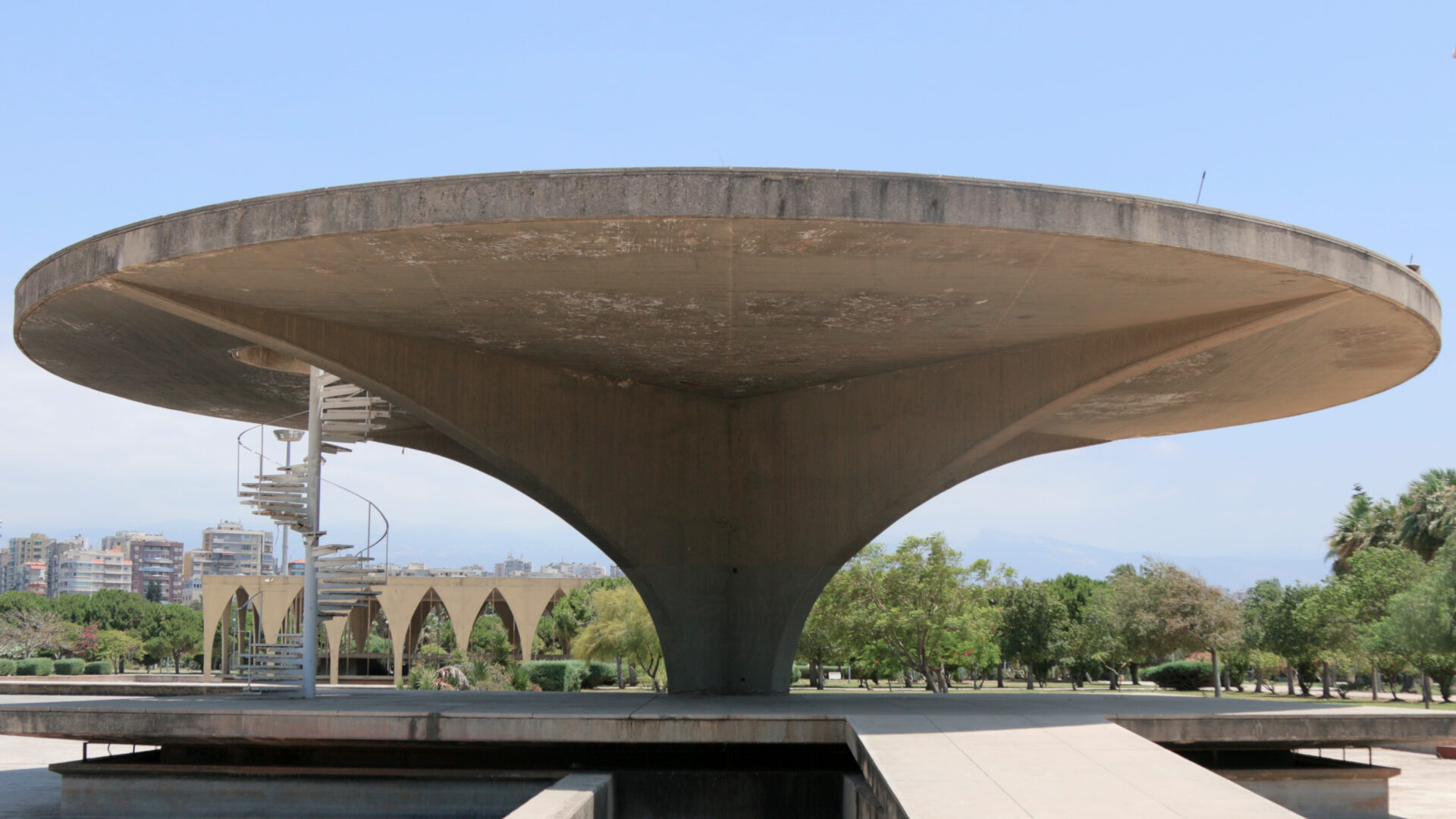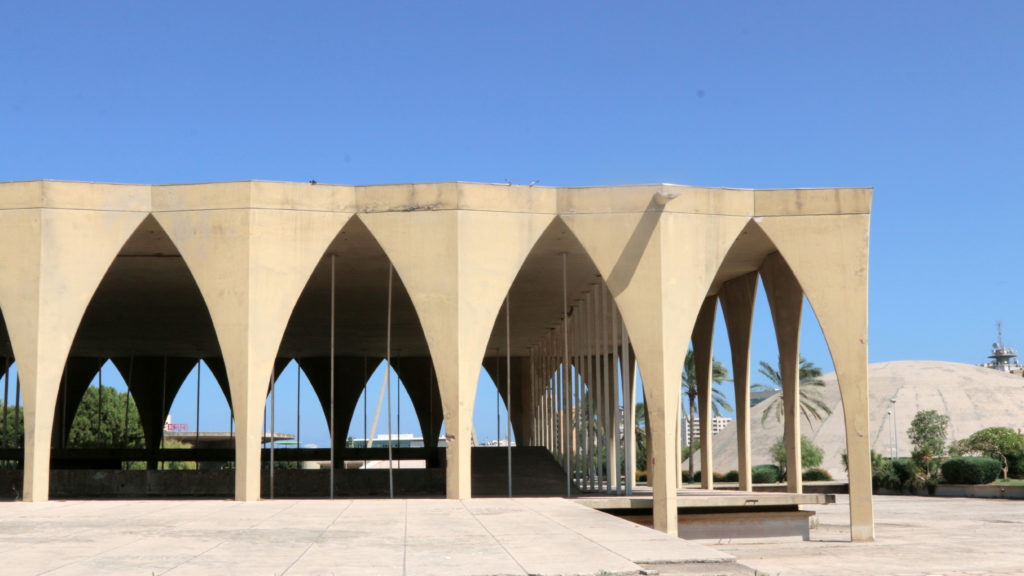We are in the middle of a mass extinction. Our mountains being hacked to pieces, our seas and our cities are polluted, and our social support systems are failing. And in Lebanon, Oscar Niemeyer’s utopian vision is slowly crumbling away. If that all sounds depressing, it may help to remember that everything from nature, culture and civilisations tend to move in cycles. This month, Karina el-Helou, the founder and president of independent curatorial platform Studiocur/art, is curating the first ever contemporary art exhibition to be held at Brazilian architect Oscar Niemeyer’s modernist park in Tripoli, exploring cyclical patterns through the work of 19 Lebanese and Mexican artists.
Cycles of Collapsing Progress will run from September 22 to October 23 at the Rachid Karami International Fair and the historic crusader citadel in Tripoli and is divided into three thematic sections: Collapse of Modernism, Cycles of Nature and Socio-Historical Cycles. Niemeyer’s fair makes the perfect surroundings in which to explore these themes. Designed in the 1960s and constructed in the early 1970s, it reflected Lebanon’s aspirations for the future at a time of post-independence ambition and prosperity that would soon be swallowed up by war.

Niemeyer’s signature modernist style is visible in every line and aspect of the fairground. Beautiful landscaped gardens surround a series of isolated sculptural buildings made from concrete, Niemeyer’s signature material. The Brazilian architect had the eye of an artist and each building is designed in relation to those around it, creating spectacular views across the park. Construction was completed in 1974 but tragically the trade fair was never to fulfil its purpose. After the outbreak of the Lebanese civil war in 1975 it was occupied by a series of militia groups and then the Syrian army, which used it as a base until 2005.
The abandoned fairground, which activists and architects warn is in danger of crumbling if efforts are not made to preserve it, is the perfect location for an exhibition focusing on notions of cyclical time and the destruction and reconstruction of civilisations. Organised in collaboration with Beirut Museum of Art and the Anissa Touati Corporation, who coordinated and curated the Mexican artists, Cycles of Collapsing Progress will reflect on human, natural and political cycles through 18 projects, 11 of them commissioned for this exhibition. In the wake of two residency programmes, one in Beirut and the other in Guadalajara, the participating artists have had months to reflect and to exchange ideas, contributing to a rich cross-cultural dialogue surrounding concepts of progress and collapse.
Highlights are set to include a site-specific sound installation by Lebanese artist Zad Moultaka, who represented Lebanon at the Venice Biennial in 2017. Moultaka will transform Niemeyer’s dome, an unfinished space intended to be an experimental theatre, into an immersive aural experience. A multi-channel sound composition will reference the cracking of snowmelt, hinting at the problems posed by global warming.
The exhibition allows a chance for visitors to experience Niemeyer’s spectacular vision in a new way, provoking reflection on the past, present and future of the venue, the region and the world.

Inside Niemeyer’s intended space museum, a building usually closed to the public, Lebanese duo Joanna Hadjithomas and Khalil Joreige, winners of the 2017 Marcel Duchamp Prize, will revisit their famous project The Lebanese Rocket Society, activating the space for its intended purpose as a space museum for the first time.
Mexican artist Edgardo Aragon will present Mute, an audio-visual work focusing on the stories of rappers from Tripoli who don’t have identity papers or passports due to a failure of the Lebanese system. Situated in one of the park’s most striking buildings, the Lebanese pavilion, the work will take the form of a walk-through in which visitors can listen to the rappers without seeing them, a reflection on the dichotomy between their existence as voices and their non-existence as legal citizens.
The opening night of the exhibition will feature live performances by Moultaka, Hadjithomas and Joreige and a “dead-concert” at Aragon’s installation, in which there will be music and lights but no performers. During the course of the exhibition, three live rap battles will also be staged at the premises of the NGO March, which works with marginalised youth in Tripoli, and Cuadrante Creativo, an NGO run by Mexican artist Fritizia Irizar in Culiacan, working with young Mexicans facing similar problems. Irizar will also be participating in the exhibition with an installation exploring obsolescence and equilibrium.
Part of the exhibition will also be held in the Crusader citadel, where work by Lebanese artists Haig Aivazian and Rayyane Tabet will explore cycles of scientific and historical discovery and the commonalties between the present and the past.
The exhibition allows a chance for visitors to experience Niemeyer’s spectacular vision in a new way, provoking reflection on the past, present and future of the venue, the region and the world. The fragility and significance of Niemeyer’s unrealised vision are best summed-up in a site-specific installation by Lebanese artist Marwan Rechmaoui: a scale model of the dome sculpted entirely from resin, a highly malleable yet strong substance.

